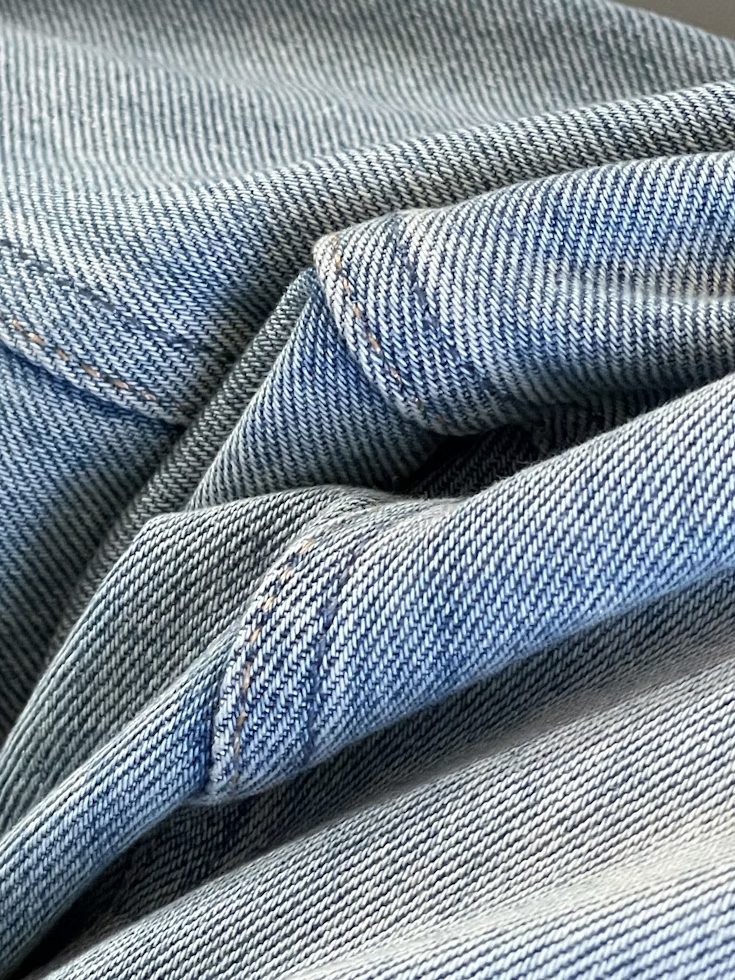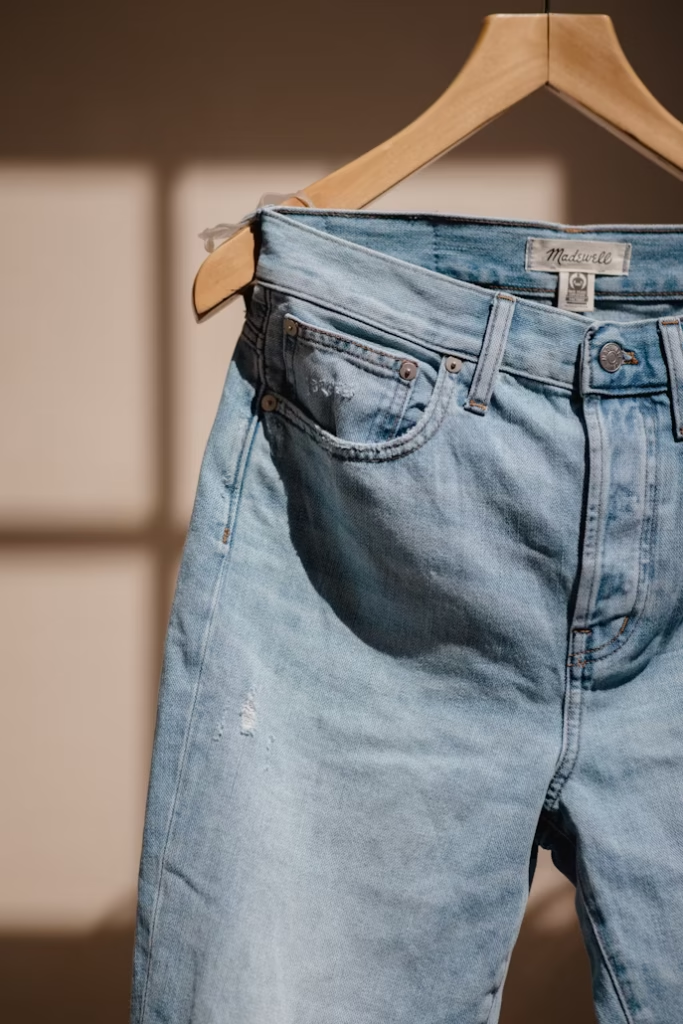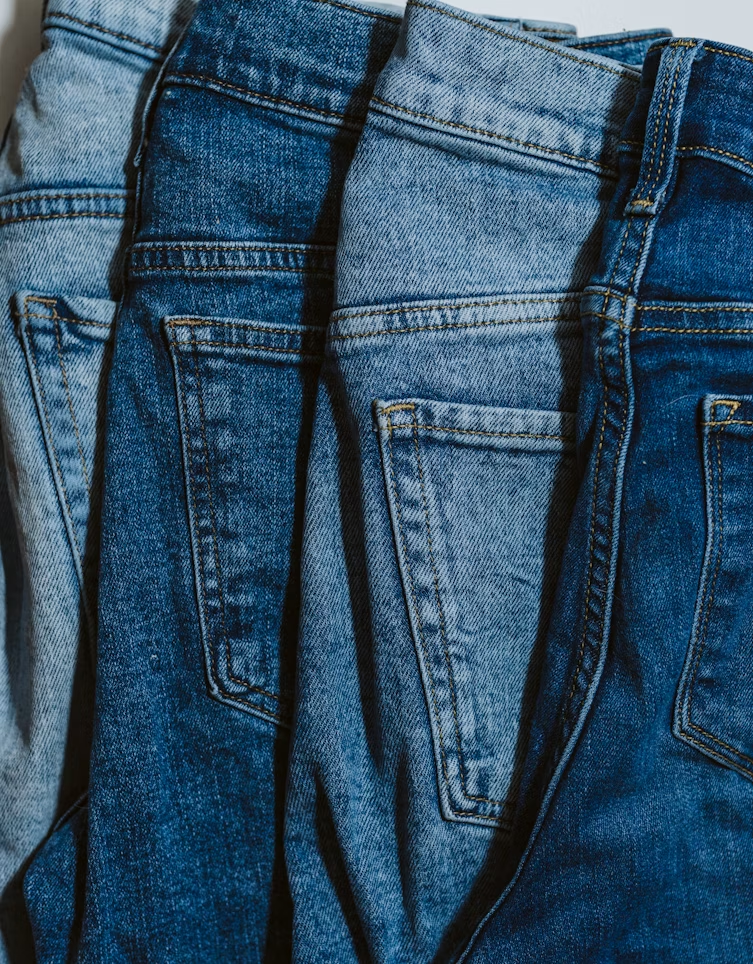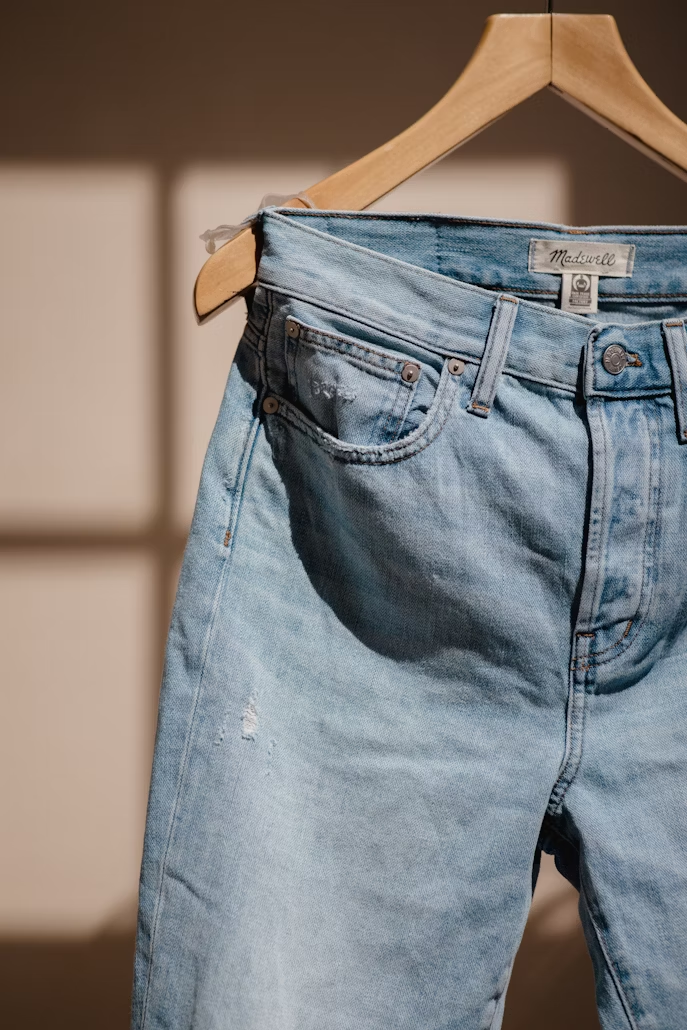Denim jeans manufacturing is one of the most iconic processes in the fashion world. Jeans are timeless, durable, and a staple across every gender and age group. In this ultimate guide, we’ll walk you through the complete denim jeans manufacturing process.
Step-by-Step Denim Jeans Manufacturing Process
1. Denim Jeans Manufacturing: Fabric Selection
The journey begins with heavyweight denim, usually made from 100% cotton or cotton blends with a touch of elastane for stretch. Fabric quality determines comfort, durability, and how well jeans age.

2. Cutting & Pattern Making
Automated cutting machines slice fabric layers according to patterns. Accuracy in this step is crucial to minimize fabric waste and ensure proper fit.
3. Stitching & Assembly
Sturdy stitching techniques like chain stitching and double-stitching are used in denim jeans manufacturing. Specialized sewing machines add strength to seams, pockets, and belt loops.
4. Washing & Treatments
Denim jeans are famous for their washed and faded look. This step includes stone washing, enzyme washing, acid washing, or sandblasting to achieve unique shades and textures.

5. Finishing Touches
Final details such as rivets, zippers, brand labels, and pressing bring the jeans to life. Every pair is inspected for quality before packaging.
Popular Denim Treatments
- Stone Wash: Creates a faded, worn-in effect.
- Enzyme Wash: Eco-friendly alternative that softens fabric.
- Acid Wash: Gives bold contrast patterns.
- Laser Finishing: Modern technique for precise, stylish designs.

Pro Tip: Always test wash samples before mass production. This ensures colorfastness, shrinkage control, and quality finishes.
Why Denim Jeans Dominate Fashion
Denim jeans are versatile, long-lasting, and culturally iconic. From casual wear to high-end fashion, jeans remain one of the most manufactured and worn items globally.




